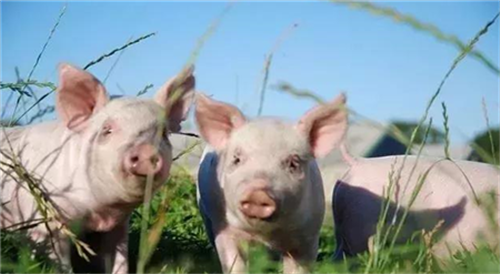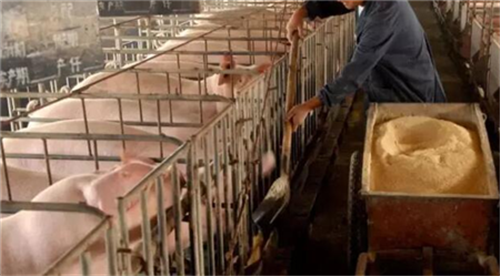The sow did not eat for 4 consecutive days after delivery because of it.
Recently, when I was patrolling in the delivery room of a pig farm, I found that a sow showed persistent fever (39.8 ℃), poor appetite, depression, redness and swelling of the vulva and severe pus in the vaginal register from the first day after parturition. The delivery room staff treated it every day, but still did not eat food for 4 consecutive days.

Sows are depressed in spirit and do not eat vulgar registered permanent residence to discharge thick gray juice.
Measures taken by the delivery room staff:
Before and after feeding (twice a day), the sows were fed with glucose water and anti-inflammatory drugs (oxytetracycline, lincomycin and ceftiofur alternately). On the day after delivery, Gongyanjing 100ml + lincomycin 20ml was infused to promote the excretion of concentrated juice.
The sow does not eat continuously after giving birth because it is not finished!
Results on the morning of the 4th day after delivery, the sow successfully excreted a stillborn fetus, so Gongyanjing 100ml + lincomycin 20ml was reperfused on the same day. On the fifth day after delivery, the sows began to eat a small part of the feed.
Although sows eventually resumed feeding, it did great harm to the postpartum recovery of sows and the rapid growth of piglets because they did not feed for a long time. Therefore, through the above production cases, the enlightenment to the pig farm is that only by paying attention to the monitoring of the labor process of sows can we help them to recover better after delivery.
Two problems existing in the delivery room of some pig farms
1. The delivery record is not standard.
The time of broken amniotic fluid and placenta of sows is as important as the interval between births. Only by keeping a clear record can the delivery room staff know whether the sows have finished giving birth. However, the lack of delivery records and records is a true portrayal of many pig farms, resulting in abnormal sows not being delivered in time.
Pig farms need to standardize the filling of delivery records.
2. The sow did not strengthen the management after giving birth.
In the face of dystocia in sows, most of the delivery room staff will choose to pay for delivery directly. However, after the end of delivery, the management of sows has not been strengthened, such as timely infusion to restore productivity and antibacterial and anti-inflammatory, resulting in the difficulty of the next delivery of sows, and even lead to the final piglets or placenta fragments can not be excreted.
The delivery room staff gave birth to the sows.
What are the methods to determine whether the sow is finished?
1. Look at the external performance of sows
If any piglets are not produced, the sows will show symptoms such as nudging, convulsions, shivering, and so on; if the sows suddenly calm down, it means they have finished giving birth.
2. look at the strength of the sow's hard work.
If there is no responsibility, it means that the sow has given birth; if there is a slight responsibility, it means that there are fragments of placenta or the fetus has not been fully excreted.
3. Look at the changes in the body of sows
If you observe the triangular area of the upper abdomen of the sow, if the sow suddenly relaxes and the triangular area collapses obviously after giving birth to a piglet, it means that the sow is basically finished.
4. Look at the color and thickness of the placenta
In the process of delivery, the placenta produced in the early stage of sows will be pulled by piglets and become thin and dark; the final placenta will not be pulled by other piglets, and the umbilical cord blood will be lost too much, and the placenta will be thick and pale.
5. Look at the number of umbilical cords on the placenta
Generally speaking, the number of umbilical cords on the placenta corresponds to the number of piglets. If it is found that the number of umbilical cords on the placenta is the same as the number of piglets that have been given birth, it means that the sows have given birth.
6. Look at the integrity of fetal membranes
If there is a complete fetal membrane on the placenta, it means that the sow has given birth. Because the final birth of piglets, its fetal membrane has not been damaged by the front piglets, will be more complete.
7. See if the piglets are covered with fetal membranes.
The final piglets are more likely to be born because the placenta has fallen off from the uterine wall and can only be contracted with the help of the uterus, which is usually produced with the placenta. If it is found that the piglets are covered with fetal membranes, it means that the sows have finished giving birth.
8. B-ultrasonic judgment
Qualified pig farms can directly use B-ultrasound to determine whether the sow is finished.
Summary:
The management of the delivery room focuses on the details. If you want to raise a good sow, you must first learn to observe the sow's every move. As a delivery room manager, it is necessary to master the correct judgment method of sow delivery; at the same time, it is also necessary to standardize delivery records and delivery processing and other related operations. Only in this way will there be fewer and fewer postpartum problems in sows.
- Prev

There are 11 causes of diarrhea in piglets of different ages. How can we prescribe the right medicine to the case?
There are 11 causes of diarrhea in piglets of different ages. How can we prescribe the right medicine to the case?
- Next

Sharing of a case of control of viral diarrhea in piglets in delivery room
Sharing of a case of control of viral diarrhea in piglets in delivery room
Related
- On the eggshell is a badge full of pride. British Poultry Egg Market and Consumer observation
- British study: 72% of Britons are willing to buy native eggs raised by insects
- Guidelines for friendly egg production revised the increase of space in chicken sheds can not be forced to change feathers and lay eggs.
- Risk of delay in customs clearance Australia suspends lobster exports to China
- Pig semen-the Vector of virus Transmission (4)
- Pig semen-the Vector of virus Transmission (3)
- Five common causes of difficult control of classical swine fever in clinic and their countermeasures
- Foot-and-mouth disease is the most effective way to prevent it!
- PED is the number one killer of piglets and has to be guarded against in autumn and winter.
- What is "yellow fat pig"? Have you ever heard the pig collector talk about "yellow fat pig"?

